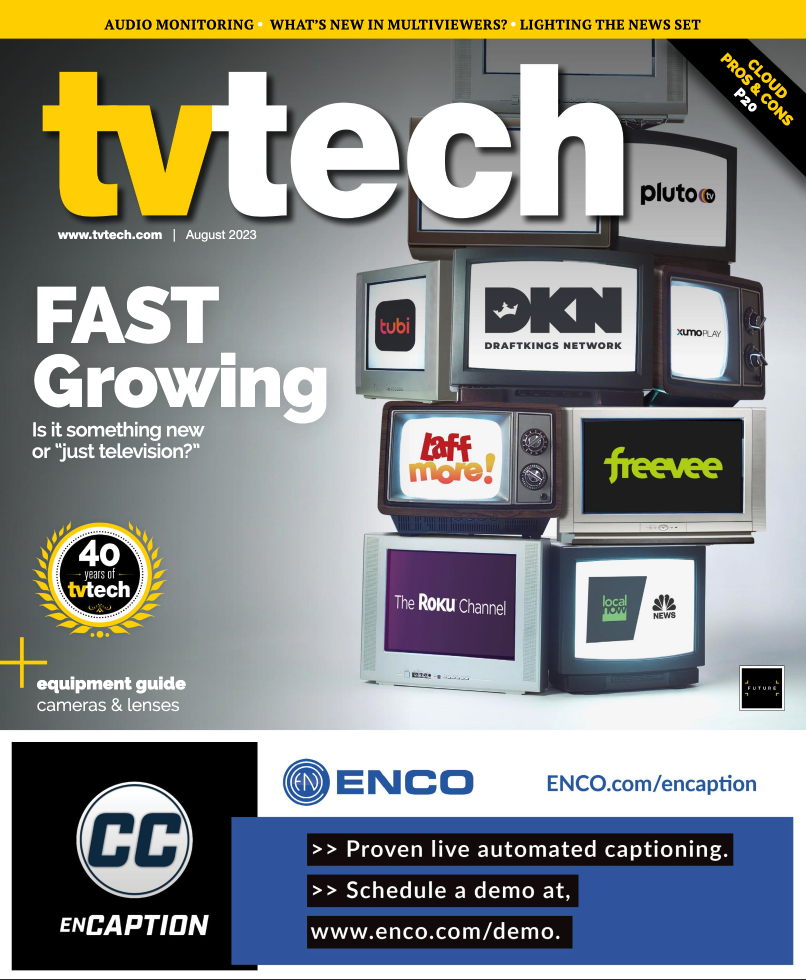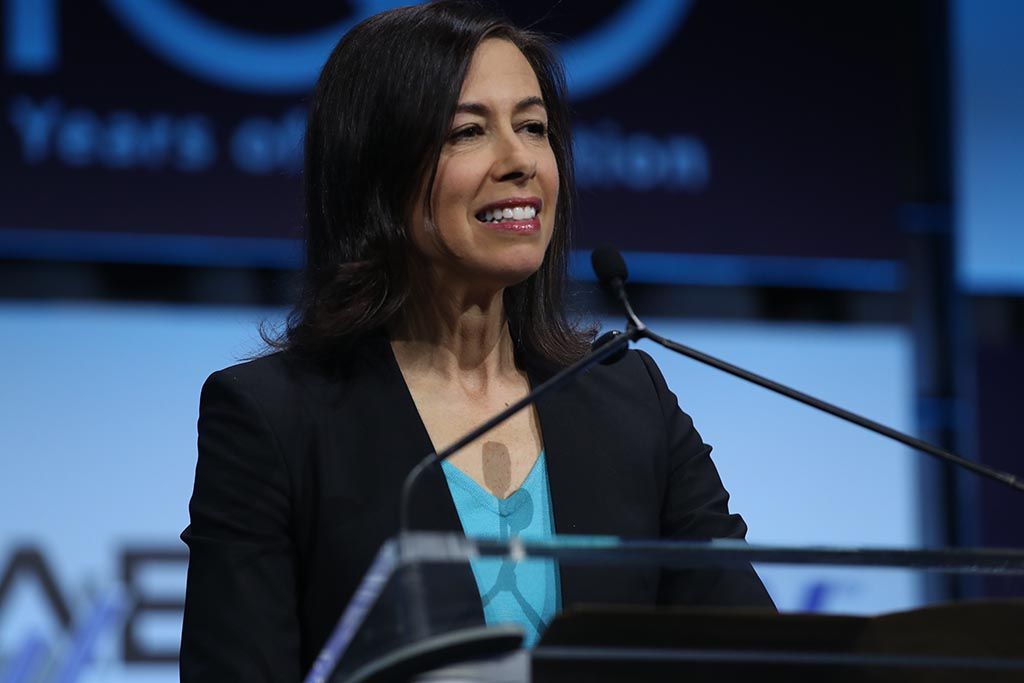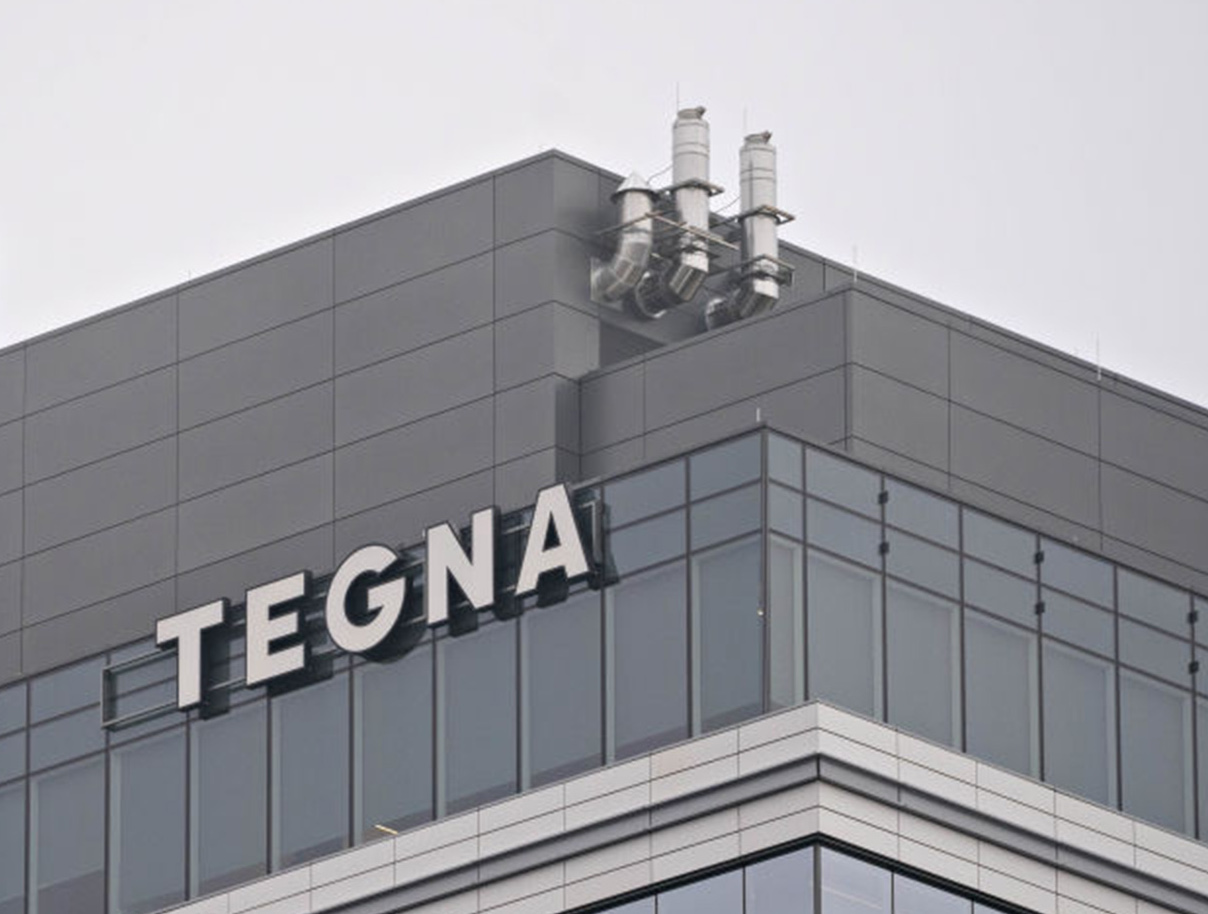TV in 2023: Transition or Transformation?
Between Hollywood strikes, changing viewer habits and concerns over AI, the past year showed an industry deep in rapid evolution

What lies ahead is often more important than what just happened, and the media technology developments of 2023 augur plenty of upheavals in store for 2024.
Despite the flurry of streaming and artificial intelligence activity, the comatose NextGen TV inactivity and the shape-shifting Hollywood strikes, the past year has largely been a quiet period—typical of a transition presaging a looming overhaul in the production and delivery of video content and paving the way for whatever comes next.
As usual, the major topics overlap and interweave in an irregular pattern of business relationships that are intensely affected by technological, financial and regulatory factors.
For example, the dominance of streaming video arrives along with ownership changes (such as Disney’s acquisition of Comcast’s share in Hulu) and a reevaluation of retransmission consent rules and fees as they apply to streaming carriage of TV shows. Similarly, the frenzy about Generative Pre-trained Transformer (GPT)—a core tool of AI—became a critical negotiating element in the TV actors and writers’ strikes.
The emerging opportunities in 5G broadcasting reflect the dominating role of video in the mobile communications sector, but also raise competitive questions about which industry (legacy broadcasters or mobile carriers) will dominate in these ventures. Such uncertainties tie into the evolving issues of targeted advertising and the concomitant shifting audience attitudes toward media and marketing.
Moreover, the connection between cord-cutting and retransmission consent was apparent in the Charter Communications (Spectrum TV) stand-off with Disney (ABC/ESPN) at the start of the college football season. The overall cable churn rate at the six largest Multiple System Operators grew from 7.5% in Q3 2022 to 9.3% during Q3 2023, according LightShed data—and that underscores the migration from cable to streaming options.
Change is afoot.
The professional video industry's #1 source for news, trends and product and tech information. Sign up below.
Even in this turbulent yet intertwined media evolution, a handful of topics emerge as benchmarks for the new broadcasting landscape:
Streaming: FAST Growth but Still Finding Its Way
Streaming video is now the dominant viewing option, according to Nielsen and several other audience studies. In a report released last summer, Nielsen said that 39% of viewing time was spent on streaming, while cable channels gleaned 30% and broadcast had 20% (the “other” 11% included gaming and DVDs). Although the streaming tally may have been inflated by summer doldrums, Nielsen’s historical data showed the continual shift towards streaming options.

And there are plenty of choices, although aside from the biggies (Netflix, Hulu, YouTube TV, Roku, Disney+), streaming channels seem to come and go.
In November, Jonathan Katz unveiled plans for “Free TV Networks,” which will deliver free over-the-air and streaming channels, starting with digital broadcast channels such as “The 365” aimed at African-American viewers and “Outlaw” (Western programs).
At the same time, streaming bundles are popping up in endless configurations. For example, Verizon’s wireless service recently discounted Netflix and Max (formerly HBO Max) when bought together, and all the major streamers are toying with ad or no-ad versions: Netflix with commercials costs $6.99 per month, while its lowest priced ad-free version costs $15.49. Likewise, Amazon automatically puts commercials into Prime Video unless subscribers pay $2.99 per month to squelch them.
An analysis in October found that 47% of U.S. homes use a FAST (Free Ad-supported Streaming TV) service at least once a week. That was part of the Kantar Entertainment-on-Demand study which found that 120 million homes use at least one video streaming service.
Indeed, FAST has become the new benchmark in the streaming category with Netflix boasting 15 million monthly active users for its ad-supported subscription tier. FAST’s acceptance is also evidence by the growing number of programming alliances, such as the deal between Golf Nation and TV maker Vizio, which will put the golf events on its “WatchFree+” menu of its FAST on-demand smart TV receivers (connected TV).
Meanwhile, fickle viewers are still churning galore. A TransUnion analysis found that 52% of subscribers canceled a streaming service because of price increase, and 29% dropped off because they had finished watching a specific show on that platform. A similar number canceled “due to lack of new content,” and 17% admitted that they abandoned a streaming service because they got access to someone else’s credentials.
NextGen TV’s Roller Coaster Year
Is ATSC 3.0 (“NextGen TV”) the “AM Stereo of our age?” That cynicism spread throughout the year, especially after LG Electronics had to abandon production of 3.0 sets and broadcast networks continued their lackadaisical embrace of the standard.
LG, which spearheaded NextGen TV receiver efforts, announced it would no longer include ATSC 3.0 tuners into its 2024 models after losing in court against Constellation Designs LLC, which claimed it held patents over some of the receiver technology LG used.
LG’s retreat (albeit possibly temporary) fueled concern that other TV set makers would also back down, given the paucity of audience uptake—and despite pronouncements from the Pearl TV consortium that more than 10 million NextGen TV “capable” devices will be in homes by the end of 2023. (That sales figure amounts to about half the number of TV sets that have been sold annually in the U.S. during the past few years.)
LG asked the FCC to intervene in the patent case, but the National Association of Broadcasters urged the commission to stay out, asserting that it does not have authority and that its rules would not resolve the problem. The faceoff underscored the ongoing complexity of technical and regulatory inter-relationship.
On the other hand, broadcasters eager to switch off 1.0 have asked the FCC for help in establishing a deadline. FCC Chairman Jessica Rosenworcel responded with the formation of a “Future of TV” initiative at the NAB Show. The NAB has hosted a number of meetings and first reports should be forthcoming by next summer.

Despite the setbacks, NextGen TV promoters could boast that their TV signals are now available in New York City as well as another 75+ cities, with a dozen more markets (including Chicago and San Diego) “coming soon.”
Hollywood Strikes
The dramatic (and sometimes comedic) Hollywood labor disputes involved a variety of issues that will affect the future of entertainment, and (since wordsmiths are performers and were at the core of these disputes) this is not the last word or final act. The artists wanted—and won—residual payments from streaming video productions and assurances regarding use of their likeness in future artificial intelligence-generated productions.
Although “talent” got what it wanted (to some degree), the longer-range effect is still unclear. Analysts expect that studios and networks will pare back the number of productions and make other financial cuts to handle the costs of these latest labor deals.
Although the Hollywood strikes focused attention on the looming impact of AI throughout the media industry and society the resulting settlements barely just scratched the surface of AI’s potential role in the video and media category. Developers are already touting AI tools that can manage newscast production, create short-form videos (such as teaser promos) and maximize search-engine-optimization keywords and category placement plus social media presence.
Anna Chauvet, vice president-Public Policy for NAB envisioned what’s next in her May blog:
“AI technology brings immense potential for unlocking operational efficiencies in broadcasting when it’s used responsibly,” Chauvet said. She cited, “efficiencies and operational help” for tasks such as scripting commercials, first drafts of content, speeding up transcription services and social media posts for on-air talent.
But Chauvet also reminded broadcasters of AI’s threats regarding use of copyrighted works plus its ability to distort and spread misinformation and urged that “responsible development and use of AI should ensure the integrity of our broadcasters’ work and the trust … [and should] adequately compensate broadcasters.”
‘Creator Economy’ Growing in Video Sector
Homemade videos have been part of the video ecosystem for decades, but thanks to TikTok, Facebook, YouTube and other social media, the broad “creator economy” has grown to a $250 billion business this year, and Goldman Sachs Research expects it could nearly double to $480 billion by 2028.
In an April report, the investment analysts noted that increased technology has “lowered barriers to content creation” triggering more digital media consumption. The investment firm expects the current 50 million global creators to increase by up to 20% compound annual growth rate during the next five years, monetized by access to large pools of capital and fueled by “strong AI-powered recommendation engines,” which will match relevant content creators with interested users.
Such new production sources (and distribution via video blogs and podcasts) bolster Goldman’s mega-billion-dollar forecast. The impact on legacy TV operations is expected to become significant.
Ownership Overhauls
When the $8.6 billion merger of broadcaster Tegna Inc. (which owns 64 TV stations) into hedge fund Standard General was abandoned in May, analysts attributed the move to concerns that the deal would lead to higher prices for consumers and job losses. A planned FCC investigation into the acquisition led to a Standard General suit against the Commission, which was overturned. As part of the deal, Cox Media Group would have acquired several major market stations that Tegna owned.

Although there was considerable finger-pointing about the culprits in this failed transaction, the plan has become a poster-child of the rearrangement of industry’s ownership. A few months later, Disney CEO Bob Iger indicated he may jettison some of the firm’s legacy holdings. Insiders believe the company will hold on to network brands best suited to streaming, including ABC and the Disney Channel.
The recently conjoined Warner Bros. Discovery is also expected to focus on its holdings with the great streaming opportunities.
5G Broadcast: Collaboration or Competition?
It’s hard to claim that the “jury is still out” on another alternative media option—5G Broadcasting—because the trials are still underway.
LPTV station WWOO-LD in Westmoreland, N.H. (near Boston), is currently operating on a temporary special authorization to transmit programming and data via 5G. The station, licensed by Milachi Media LLC, began its transmission of a 5G signal over its licensed ATSC 3.0 facility in June. The test, which is scheduled to run through mid-January 2024, is intended to gauge the viability of a national 5G broadcast infrastructure for carrying data and emergency alerts.

In a perceptive TV Tech analysis of the 5G Broadcast situation, Doug Lung raised a series of vital questions about introduction of the service:
- Does it have the potential to replace ATSC 3.0?
- Will wireless operators who control mobile devices features permit 5G Broadcasting reception without a government mandate?
- How will it get into vehicles and older handsets?
Rick Ducey, BIA Advisory Services’ managing director, said in a Forbes interview that the U.S. broadcast and mobile industries are waiting to see if it’s possible to combine “multicast and unicast networks to offer integrated services over common devices.”
Apple Vision Pro: An Immersive Video Prelude to New Competition
Apple Vision Pro, a mixed-reality headset that the computer-maker unveiled in summer, is being promised as an “infinite canvas” for “entertainment experiences” as well as other home and office applications.

Apple says that the $3,500 device can be used to watch movies and TV shows, including three-dimensional programs. Apple Immersive Video offers 180-degree high-resolution recordings with Spatial Audio. The headset, which will become available in early 2024, is being positioned to compete with Microsoft HoloLens and headsets from Magic Leap.
Although not a broadcast receiver (yet), the capabilities of the visionOS – including a three-dimensional interface with “infinite screen real estate” could open doors to even more immersive production and display options. Apple is also citing its ability to deliver “all-new ways to multitask.”
The company claims that, “Apple Vision Pro can transform any space into a personal movie theater with a screen that feels 100 feet wide.”
Audience Disdain: Waning Trust in News, Hurdles for Ads
As elsewhere in American society, trust in institutions is in free-fall with media leading the plunge downwards. A Gallup survey in early summer found that public confidence in both TV news and newspapers were near historical lows, with many respondents questioning the honesty and ethics of journalists. A new high of 39% of audiences have “no confidence at all” in journalists, Gallup found.
Separately, Horowitz Research found that “younger consumers find ads in TV shows less effective” and that they “have pretty much gravitated away from ad-supported live TV.” Horowitz’s “State of Media, Entertainment, and Tech” recommended that advertisers should focus on targeted ad-supported streaming services to open “new opportunities … to re-connect with younger audiences through TV content.”
...And Some Final Words from Washington
The moribund FCC did what it could in 2023, given its limited ability with 2–2 partisan voting blocs until Anna M. Gomez was sworn in as a commissioner in September to bolster the Democratic roster. Meanwhile, an array of regulatory issues awaits federal action, including:
Retransmission consent for streaming: Cord-cutting’s impact on broadcast income has popped up via several initiatives with members of Congress urging the FCC to find a way to make vMVPDs (virtual Multichannel Video Program Distributors such as YouTube TV and Hulu) pay compulsory licensing fees to broadcasters akin to the current requirements for pay TV operators’ payments.
Inevitably an advocacy group, the "Coalition for Local News" (600 local TV stations), was formed to demand that the FCC change how it regulates live streaming services. Equally inevitable was the counter-move, called "The Preserve Viewer Choice Coalition" (YouTube TV, Roku, Disney, Paramount, NBCUniversal and others) which promptly declared such regulations as “laughable” in this era of “nearly unlimited viewing options.”
Blackouts: FCC Chairwoman Jessica Rosenworcel has floated a proposal to force cable and satellite operators to pay rebates to subscribers if MVPDs that blackout local broadcast stations.
The Biden Administration’s Proposal for a “National Spectrum Strategy:" unveiled in mid-November, is a long-term vision that will be hammered out by the Commerce Department, Defense Department and other agencies to develop mor efficient spectrum use and more spectrum sharing.
Although the bandwidth under scrutiny does not include current TV spectrum, the proposal affects more spectrum than had been expected. The study’s long-term impact is unclear and, as the White House pointed out, this initial exploration does not presume how any of the spectrum will be repurposed.
These policymaking issues underscore the array of 2023 topics that are being tee’d up for further action. And it’s anyone’s guess about how much will be done in 2024, which is already shaping up to be an ultra-contentious election year.
Gary Arlen, a contributor to Broadcasting & Cable, NextTV and TV Tech, is known for his visionary insights into the convergence of media + telecom + content + technology. His perspectives on public/tech policy, marketing and audience measurement have added to the value of his research and analyses of emerging interactive and broadband services. Gary was founder/editor/publisher of Interactivity Report, TeleServices Report and other influential newsletters; he was the long-time “curmudgeon” columnist for Multichannel News as well as a regular contributor to AdMap, Washington Technology and Telecommunications Reports; Gary writes regularly about trends and media/marketing for the Consumer Technology Association's i3 magazine plus several blogs.

